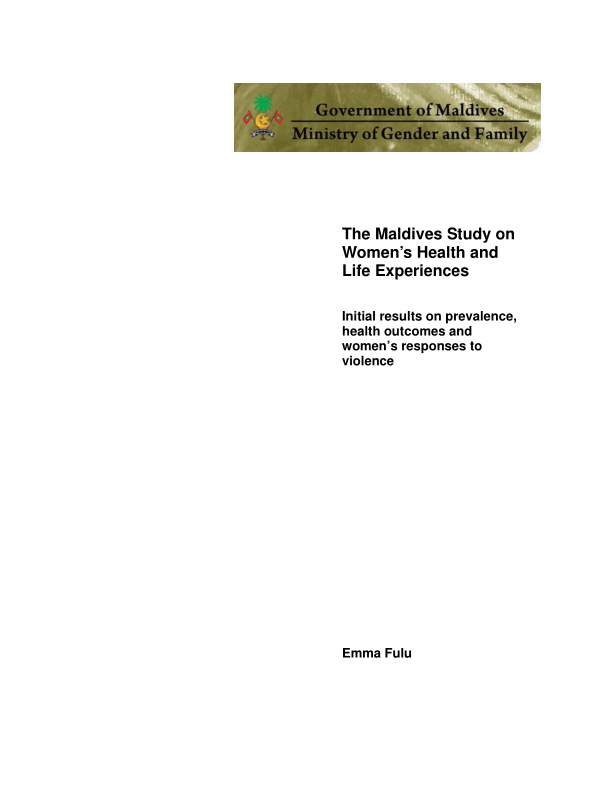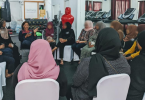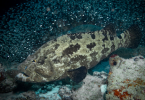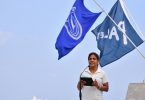Executive Summary
The Maldives Study on Women’s Health and Life Experiences is the first-ever nationally representative, quantitative research on violence against women in the Maldives. It provides the first ever prevalence rates of different forms of violence against women and girls as well as the impact of that violence on health and other outcomes. Using the World Health Organization’s standardized and rigorous methodology and adhering to strict ethical, safety and quality control procedures has resulted in robust data, and allowed for comparison with countries that undertook the WHO Multi-country Study.
The Maldives Study on Women’s Health and Life Experiences was designed to:
- obtain reliable estimates of the prevalence and frequency of different forms of physical, sexual and emotional violence against women in the Maldives, with particular emphasis on violence perpetrated by intimate male partners;
- document consequences of violence against women including effects on general health, reproductive health, and effects on children 3. document and compare the strategies and services that women in the Maldives use to deal with the violence they experience;
- explore the impact of the tsunami on violence against women;
- identify factors that may protect or put women at risk for intimate partner violence.
This first report describes the findings related to the first four study objectives: to assess the prevalence, determine health outcomes, document women’s coping strategies and explore the impact of the tsunami. Analysis of risk and protective factors for violence will be addressed in a future report.
Organization of the Study The Study consisted of a population-based household survey that was conducted around the country. The sample was designed to be nationally representative and also included additional tsunami-affected islands to give sufficient power for an analysis of the effect of the tsunami. The Study used a stratified sample based on Probability Proportional to Size (PPS) with the aim to have a sample that is self-weighted at the household level. Within each of 6 Strata islands were selected using systematic sampling with probability proportional to size (PPS), and households were selected using simple random sampling. The target population was women aged 15-49. In each selected household only one woman was randomly selected among all eligible women.
The total sample size was 2584 households: 1864 households in the atolls, 575 households in Male’ and 145 households in the 3 additional tsunami-affected islands.
The work was coordinated by the core research team in the Ministry of Gender and Family. WHO shared their methodology and questionnaire which was adapted slightly to the Maldivian context. Technical assistance in the form of interviewer training and establishing a data entry system was provided by WHO’s Dr Henrica A.F.M Jansen.
Primary financial assistance was provided by UNFPA with secondary financial support from UNICEF.
The survey used female interviewers and supervisors trained using a standardized 2 ½ week curriculum. Strict ethical and safety guidelines, as developed by the WHO, were adhered to.







